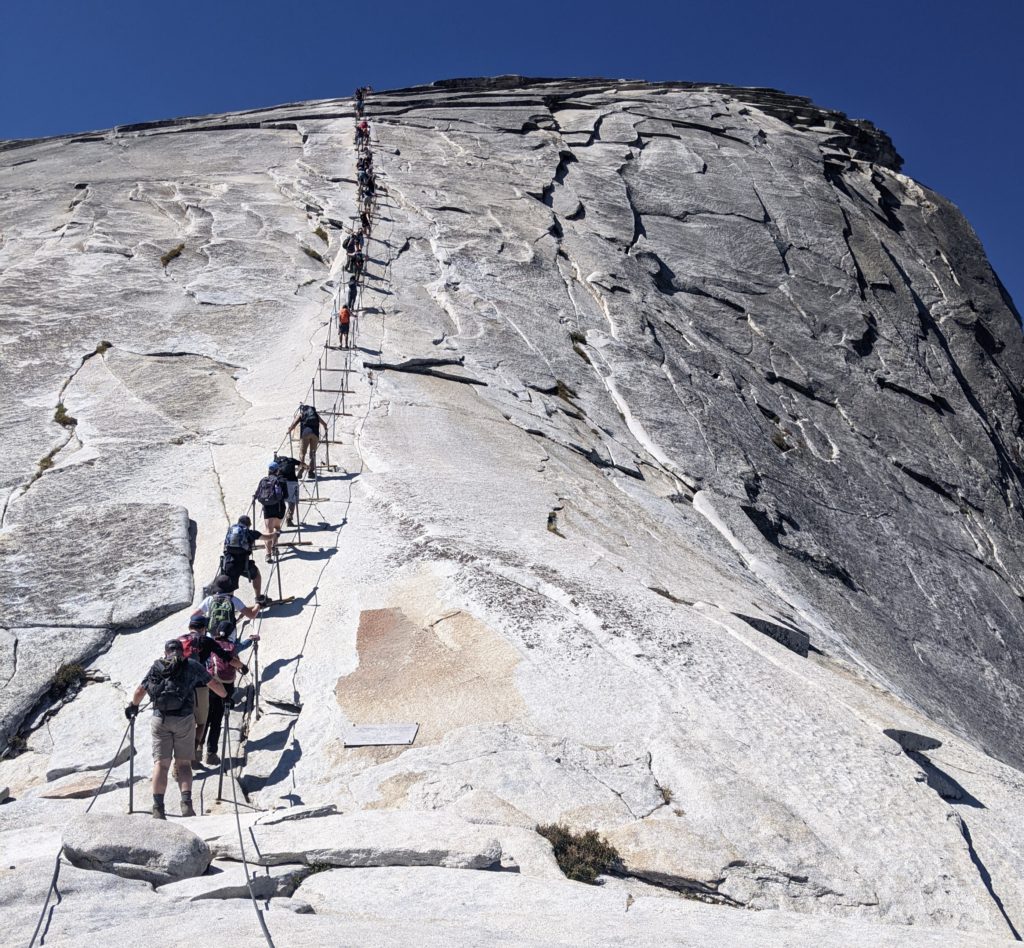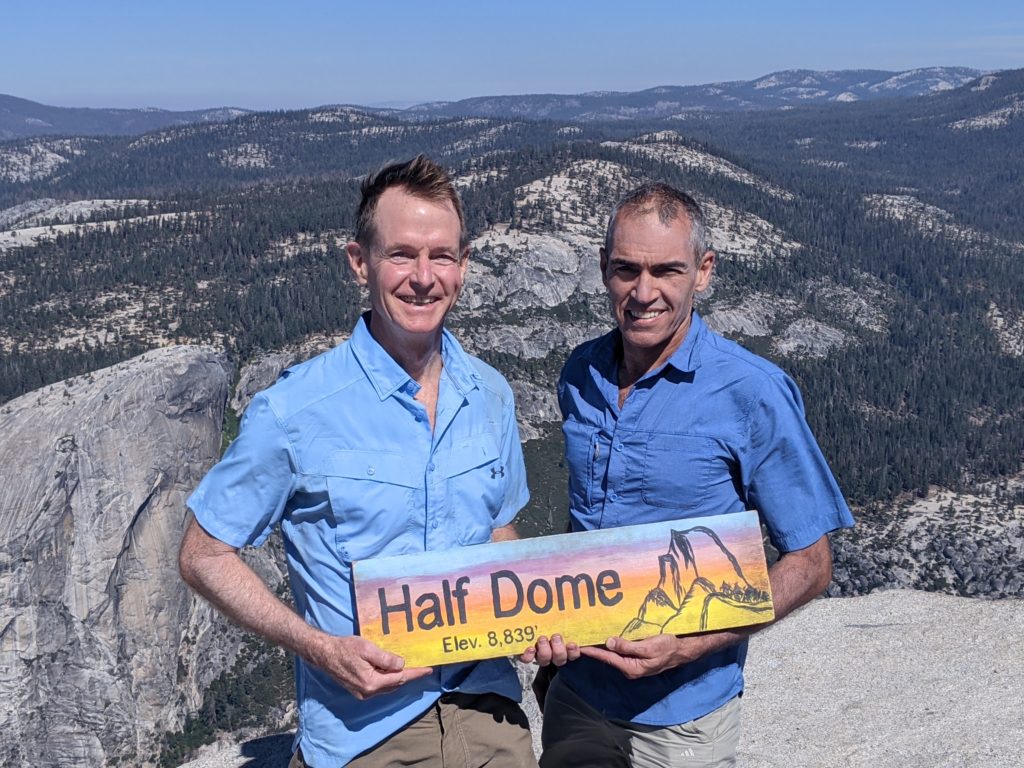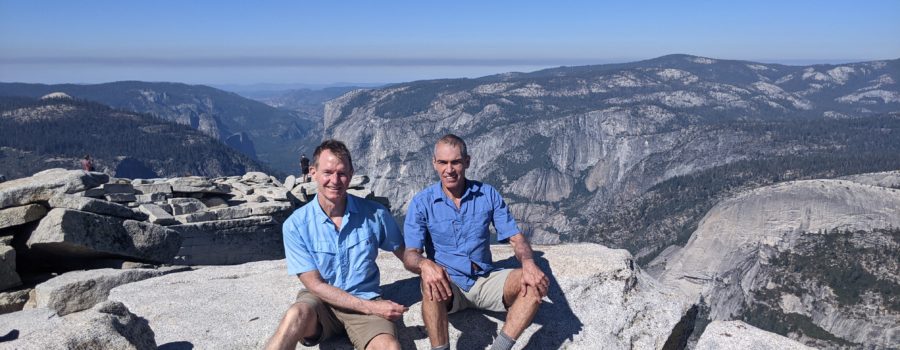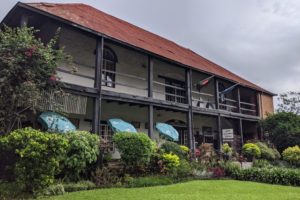Forewarned is forearmed. Lately, both in my personal and professional lives, it has been better to be neither warned, armed, nor informed.
For the last several years, I’ve tried to visit Yosemite National Park. My plans were always thwarted by concerns about the weather. I love to hike and was often warned that a spring or autumn visit was risky; the trails might be open, but they might be closed by snow. In summer, the Park is overrun with people, making a visit less appealing. The pandemic has created a lot of hassles but it has also presented opportunities. A year ago, anticipating reduced numbers of travelers, my spouse and I decided to try to visit Yosemite again, this time for my birthday in early September. In December 2020, we bought airline tickets and reserved a hotel room in Yosemite Valley for 9 months later.
Shortly after making those reservations, I met a co-worker, Karl Seydel, and asked him for hiking recommendations. I knew that Karl grew up near Yosemite and that he loved the outdoors as much as I did. Did he have suggestions? Of course! His number one hiking suggestion was Half Dome. Each February, the National Park Service holds a lottery for permits to climb to its summit. Though the vast majority of the Half Dome hike can be done by anyone, a permit is required to use the steel cables to ascend the last 500 feet. Few people are allowed on the cables each day.
I entered the lottery and crossed my fingers. In April we received the news that we were the proud owners of two permits, good for 12 September 2021. Two friends joined us on our Yosemite trip. They wanted to hike with us the first 95% of our Half Dome journey, but decided they did not want to do “the cables.” Their reason? They had watched YouTube videos of the cable climb and decided it was not for them. Neither my spouse nor I had any previous knowledge of what climbing the cables entailed, only that doing so was necessary to reach Half Dome’s summit.
At 5 a.m. in the morning, the four of us set off from Yosemite Valley. We walked 8.5 miles and gained over 4000 feet to reach the base of the SubDome, the granite prequel to the cable climb. There a ranger checked my husband’s and my permit, gave us a short talk on safety, and allowed us through.
The SubDome is a bare granite dome, a miniature version of what was to come. Instead of cables, steps are cut into the SubDome for climbing. The Ranger told us that the SubDome is like climbing stairs for 30 minutes (no problem) but provided no information about the cable route or recommendations on how we might tackle it. Shortly thereafter completing the stairs, we reached the cable’s take off point. The route looked almost vertical but not long. Jones and I donned our protective gloves (our permit told us to each bring a pair) and started up. It was one of the most difficult physical things either of us has ever done.

Ascending the final rock face of Half Dome are two parallel cables, strung on poles slightly wider than one’s shoulders. Between each set of anchoring poles (and perpendicular to the route of ascent) is a piece of wood that spans the path. The wood slat is fixed to the anchoring poles. To ascend, one must pull up on both cables with all one’s strength so that one’s feet are pushed into the rock. One pulls oneself up the 45 degree incline, moving from one wooden slat to the next, 10 feet higher. It is exhausting and frightening. At the bottom, fellow climbers suggested we never look down.
Perhaps, both in one’s personal and professional lives, ignorance is the pathway to bliss.
Shortly after starting up, a group of young women descended. It was too much for them and they were unwilling to go further. Jones and I both thought about doing the same, more than once. After 30 minutes of climbing (fall = die), we reached the summit, 5318 feet higher than when we began walking at 5 a.m. that morning. We had a long lunch, took some cheesy celebratory photos, and enjoyed the spectacular views.
Compared to going up, the descent was easy. We met our hiking companions, who had liked watching the Ranger brief our fellow steel cablers. They enjoyed seeing people come off of the top, elated (if they had summited) but always happy to have survived.

On our 4.5 hour walk back to Yosemite Valley, I thought about how this experience shared some of my recent feelings about my professional life. Two months ago, the DON clinical trial was funded. I am the study’s Principal Investigator, the person with overall project responsibility. In these past 8 weeks, some things have gone well but many have not. I am frustrated. Daily, I work hard on the project, but often feel like I am forcing several people (some in the USA, some in Malawi) to do things they are not happy about. I do not believe I am asking for the impossible or even the difficult, only the things necessary to get the project up and running, ready to enroll patients in January 2022. If I had been forewarned about the great difficulty in getting these many tasks accomplished (and feeling badly because I must bother people repeatedly to complete tasks the Project needs), would I have still agreed to be Principal Investigator of this clinical trial? Perhaps, both in one’s personal and professional lives, ignorance is the pathway to bliss.






